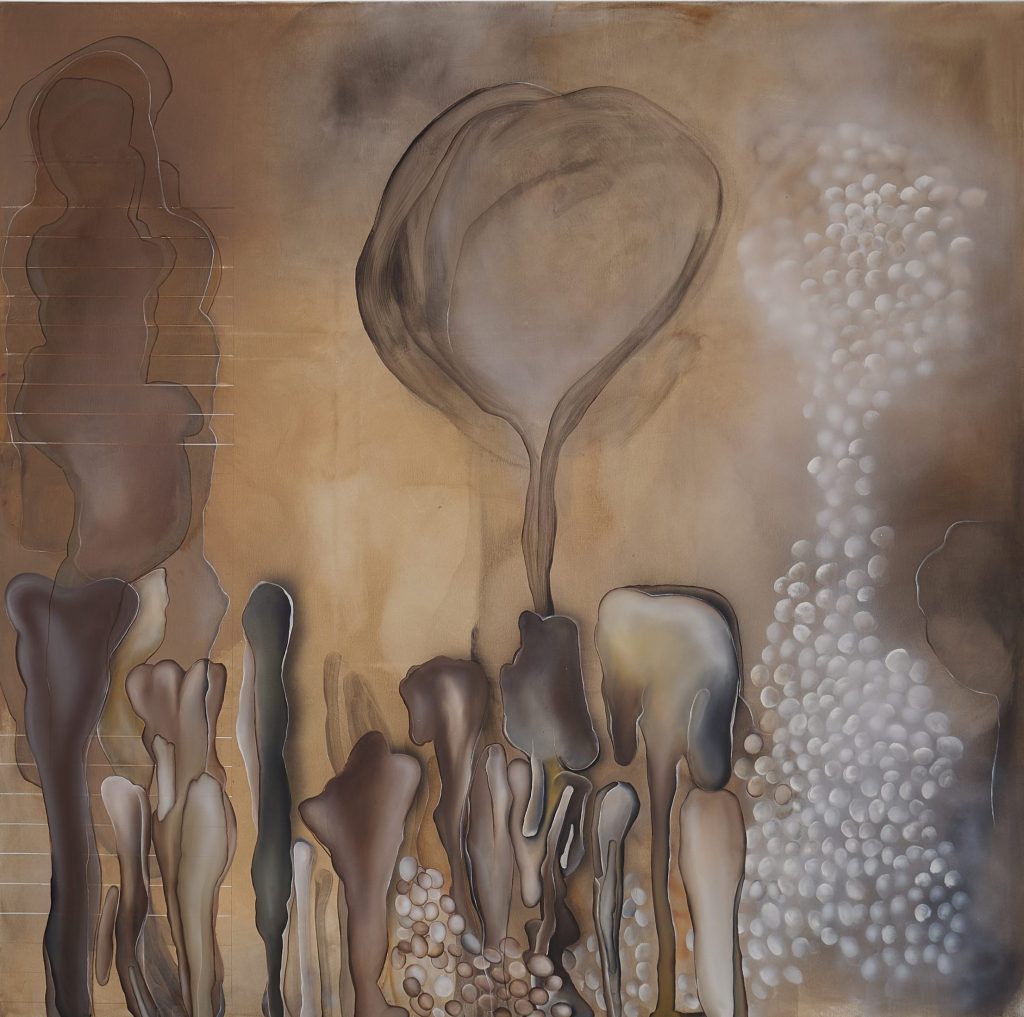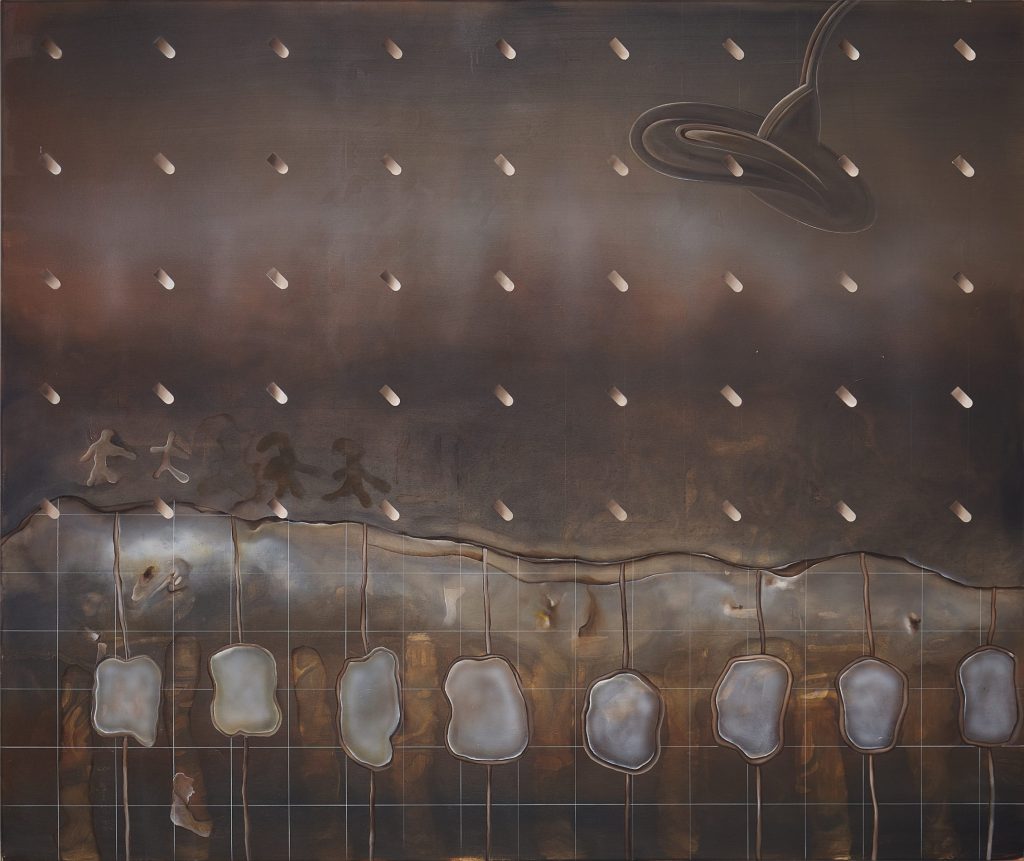“He practices an ’embedded’ art criticism,” Daniel Rovers wrote in De Witte Raaf about Why Paintings Work. “He (Benschop) did the same in his previous book, Salt in the wound. Artists in Europe. (2016), but then he covered multiple visual genres. The restriction to painting pays off this time.” Below you find excerpts from De Witte Raaf and other book reviews of Why Paintings Work. The fragments are translated into English. To read the original texts in Dutch, scroll down.
Daniël Rovers, “Why a Painting Works,” pulished in De Witte Raaf, Nov-Dec 2023:
“Benschop simply wants to facilitate a conversation about contemporary painting, especially in a time when, formally speaking, almost anything seems possible, while, morally, strict norms are sometimes imposed on the question of who can depict what. He does this in a language that, as he writes himself, is ‘not top-heavy or exaggerated,’ but ‘suitable for the art at hand.'”
“No one claimed at the entrance of the museum that everything about an artwork should be clear just by looking, he dryly states in his introduction. In that one sentence, the style and attitude of the author are encapsulated. Here is a modest, attentive enthusiast who listens well, especially to artists, and much less to critics or art historians. There is understatement in his sentences, which are clear and self-explanatory, rarely extending beyond what the content allows.”
“Why Painting Works is lucid and concrete, yet also conceptual in nature. It presents an unforeseen, unimaginable series of perspectives, techniques, and approaches, of which, as a reader, contrary to what the title suggests, you do not know if they work, because you only see the color images on the pages, something entirely different from three-dimensional canvases. Benschop succeeds in arousing the desire to see them in real life. In that sense, this book, of which an English version has been published by Garret Publications, is a catalog – three hundred pages of text and about seventy images – of a future exhibition, should a museum director grant him the favor of the necessary galleries.”
Maarten Buser, ‘Tastend kijken en dan terugpraten’ in literary magazine Liter, December 5, 2022. Review in the form of an open letter:
“Anyone expecting a specific (viewing) method based on the title ‘Why Painting Works’ will be disappointed. That operation – the ‘mechanism’ by which the painting convinces and makes you want to keep looking – varies per chapter. For example, when Kaido Ole, in a comic-like manner, opposes overly expressive painting, his art works differently than that of Beverly Fishman, who, with the visual language of minimalist abstraction, says something essential about marketing and the pharmaceutical industry. Each artist must be approached differently, and even after a sharp formal analysis, there may be enough uncertainty in the interpretation. In all those attempts, you seem to be as much a mechanic as a mystic.”
“Even when words may fall short to capture something that is better expressed in an image, they can guide your gaze. In that sense, writing – or more broadly, speaking – can help to get a better grip on art without completely dispelling the mystery. Why Painting Works is a skillful demonstration of this.”
Karel Alleene, ‘Waarom een schilderij werkt,’ on Cutting Edge (online), December 20, 2022:
“Jurriaan Benschop (1963) writes relatively concise essay collections about art. Similar authors are Bernard Dewulf, Roland Jooris, or Hans den Hartog Jager. Writers who, averse to quick sentiments, embark on a quest to provide personal meaning to a painting. In doing so, they steer clear of aesthetic terms that often transform art essays into enigmatic texts.”
Benschop’s pointed and pertinent writing style ensures that you frequently underline sentences with a pencil. Because you know that this is the kind of book you will refer to frequently. We place ‘Why Paintings Work’ alongside Bernard Dewulf’s Bijlichtingen (2001) and Roland Jooris’ Geschilderd of geschreven (1992). Small essay collections that make the reader eager to view the described works in a museum.”
You can order the book in your local art book store or through this website by filling out the order form HERE Delivery time in Europe is about one week, outside Europe two weeks approximately.
T E X T S in D U T C H
Daniël Rovers, “Waarom een schilderij werkt,” in De Witte Raaf, Nov-Dec 2023.
“Benschop wil simpelweg een gesprek over hedendaagse schilderkunst mogelijk maken, juist in een tijd waarin formeel gezien zo goed als alles mogelijk lijkt, terwijl in moreel opzicht – de vraag wie wat mag afbeelden – soms strenge normen worden opgelegd. Dat doet hij in een taal die, zoals hij zelf schrijft, ‘niet topzwaar of overdreven’ is, ‘maar passend bij de kunst die aan de orde komt’.”
“‘Hier is een bescheiden, attente liefhebber aan het woord, die goed luistert, vooral naar kunstenaars, en veel minder naar critici of kunsthistorici. Er zit understatement in zijn zinnen, die helder zijn en voor zich spreken, en zich zelden breder maken dan de inhoud toelaat.”
“Hij bedrijft een ‘ingebedde’ kunstkritiek. Dat deed hij ook in zijn vorige boek, Zout in de wond. Kunstenaars in Europa (2016), maar toen bestreek hij meerdere beeldende genres. De beperking tot de schilderkunst werpt dit keer haar vruchten af.”
“Waarom een schilderij werkt is lucide en concreet, en toch ook conceptueel van aard. Het presenteert een onvoorziene, onvoorstelbare reeks van invalshoeken, technieken en benaderingen, waarvan je als lezer – wat de titel ook mag beweren – nu juist níét weet of ze werken, omdat je op de pagina’s slechts de kleurenafbeeldingen ziet, wat iets volkomen anders is dan driedimensionale doeken. Benschop slaagt erin het verlangen te wekken ze in het echt te willen zien. In die zin is dit boek, waarvan een Engelstalige versie door Garret Publications is uitgegeven, een catalogus – driehonderd pagina’s tekst en een zeventigtal afbeeldingen – van een toekomstige tentoonstelling, mocht een hem genegen museumdirecteur de tentoonstellingsmaker de nodige zalen gunnen.”
Maarten Buser ‘Tastend kijken en dan terugpraten’ in literatir tijdschrift Liter, 5 december 2022. Recensie in de vorm van een open brief
“Wie op basis van de titel Waarom een schilderij werkt een bepaalde (kijk)methode verwacht, komt bedrogen uit. Die werking – het ‘mechanisme’ waardoor het schilderij overtuigt en waardoor je ernaar wil blijven kijken – verschilt per hoofdstuk. Wanneer bijvoorbeeld Kaido Ole zich op het stripachtige afzet tegen al te expressieve schilderkunst, werkt zijn kunst immers anders dan die van Beverly Fishman, die met de beeldtaal van minimalistische abstractie iets wezenlijks zegt over marketing en de medicijnindustrie. Elke kunstenaar moet op een andere manier benaderd worden en zelfs na een scherpe formele analyse kan er genoeg onzeker blijken in de interpretatie. U lijkt me in al die pogingen evenzeer een monteur als een mysticus.”
“Ook als woorden tekort kunnen schieten om iets te vangen dat beter in beeld uitgedrukt kan worden, kunnen ze je blik bijsturen. In die zin kan het schrijven – of breder: het spreken – helpen om toch wat meer grip te krijgen op kunst, zonder het mysterie geheel te laten verdwijnen. Waarom een schilderij werkt is daar een knappe demonstratie van.”Ook als woorden tekort kunnen schieten om iets te vangen dat beter in beeld uitgedrukt kan worden, kunnen ze je blik bijsturen. In die zin kan het schrijven – of breder: het spreken – helpen om toch wat meer grip te krijgen op kunst, zonder het mysterie geheel te laten verdwijnen. Waarom een schilderij werkt is daar een knappe demonstratie van.”
Karel Alleene, ‘Waarom een schilderij werkt,’ gepubliceerd op Cutting Edge (online), December 20, 2022:
“Jurriaan Benschop (1963) schrijft relatief beknopte essaybundels over kunst. Soortgenoten zijn Bernard Dewulf, Roland Jooris of Hans den Hartog Jager. Schrijvers die wars van snelle sentimenten een zoektocht aanvatten om een persoonlijke betekenis te verschaffen aan een schilderij. Daarbij blijven ze weg van esthetische termen die geregeld kunstessays transformeren in enigmatische teksten.”
“Benschops puntige en pertinente schrijfstijl zorgt ervoor dat je veelvuldig zinnen aanstreept met potlood. Omdat je weet dat dit het soort boek is waar je veelvuldig naar terug zal grijpen. We plaatsen ‘Waarom een schilderij werkt’ naast Bernard Dewulfs ‘Bijlichtingen’ (’01) en Roland Jooris’ ‘Geschilderd of geschreven’ (’92). Kleine essaybundels die de lezer zin doen krijgen de beschreven werken te bekijken in een museum.”
Waarom een schilderij werkt kan in elke Nederlandse of Vlaamse boekhandel besteld worden. Wilt u het boek via de post ontvangen, dan kunt u ook via deze website bestellen op deze pagina.












